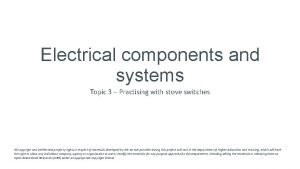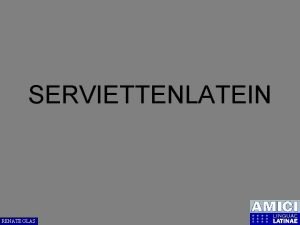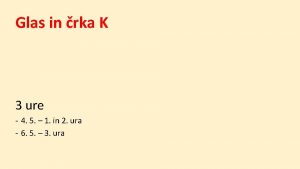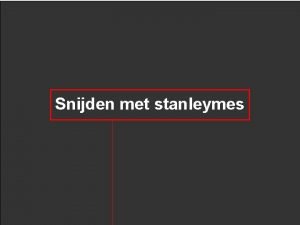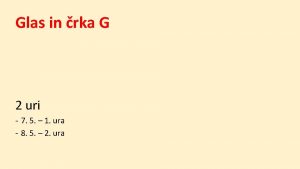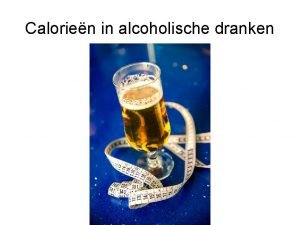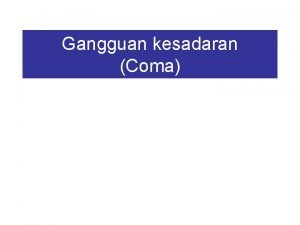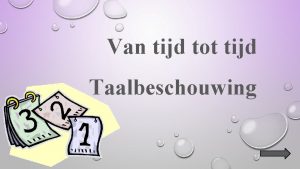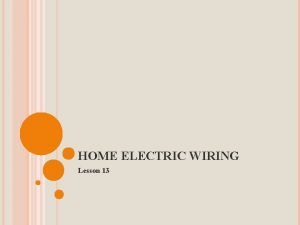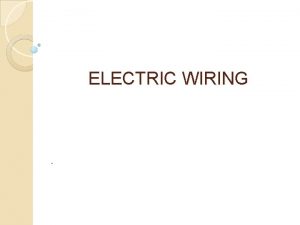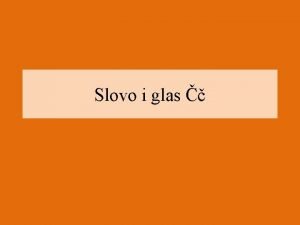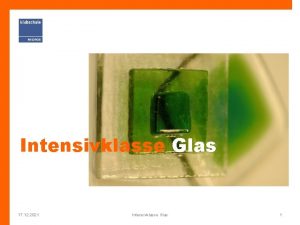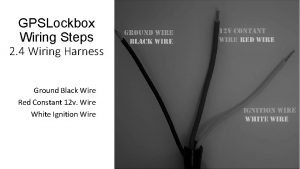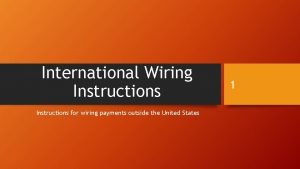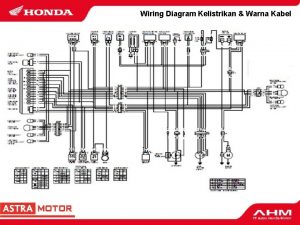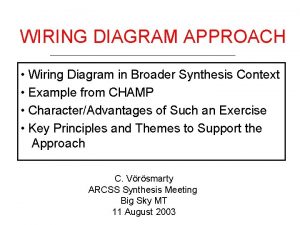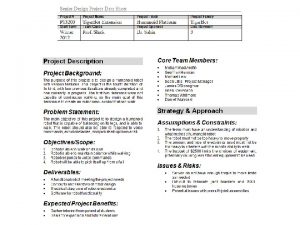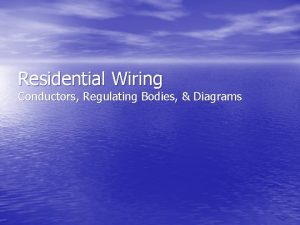Intro to Electric Circuits GLAS wiring Electric Circuits




















- Slides: 20

Intro to Electric Circuits GLAS wiring

Electric Circuits • Electricity: The flow of electrons. (Mobile particles, carrying charge) • Circuit: A path for electrons to flow in http: //chem-mgriep 2. unl. edu/Courses/Animated. Atoms. html

Voltage, current, and resistance • The flow of electrons is like the flow of water • Driven by pressure (voltage) • Pressure causes flow (current) • The relationship between pressure and flow is set by the obstacles (resistance) in the flow path • For the flow to do useful work (have power), both pressure and flow must be present Hydroelectric Dam ga. water. usgs. gov/edu/hyhowworks. html

Circuit functions In general, circuits can be thought of as combinations of: • Power Sources (battery, generator) • Loads (where power is used) (lamps, speakers, motors) • Conduction Paths (wires) • Controls (switches & knobs) • Indicators (meters, flashing lights, buzzers)

Voltage is the electrical force, or "pressure", that causes current to flow in a circuit. Voltage is the force that is pushing the electrons (like pressure pushes the water) forward. It is measured in VOLTS (V ). Count Alessandro Volta (1745 -1827)

Current is the movement of electrical charge - the flow of electrons through the electronic circuit. In our analogy, current would be the flow of water moving through the tube (wire). Voltage Current is measured in AMPERES (AMPS, A or I). Current is defined to flow from positive to negative voltages Andre-Marie Ampere (1775 -1836)

Conductors, Insulators, and Semiconductors • A conductor is a material (usually a metal such as copper) that allows electric current to pass easily. • This is opposed to an insulator (plastic, glass) which prevents the flow of electricity through it. • Semiconductors have intermediate properties which enable their conduction to be modified and controlled.

Resistance is anything that causes an opposition to the flow of current in a circuit. - Voltage + Current Resistance controls the amount of voltage Resistance and current in a circuit. Everything in a circuit has a resistance (even wire). A resistor is a device designed specifically to have a constant resistance. It is measured in OHMS (W). Design and analysis of electronic circuits hinges on thorough understanding of the relationships between voltage, current, and resistance.

Quantification: Ohm’s Law expresses the relationship between current, voltage, and resistance. It was named after the German physicist Georg Simon Ohm (1787 -1854). This is one of the most fundamental concepts in electronics. Learn Ohm’s Law. Learn it inside and out! W

Ohm’s Law V is the voltage between two points (measured in volts) I is the current flowing along a path between those two points (measured in amperes) R is the resistance of that path (measured in Ohms) Volts = Amps times Ohms

Electronic Schematics • Electronic circuits are drawn using schematics which use standard symbols for each type of electronic component Voltage (Volts) Circuit Schematic I Load/Resistor (Ohms) + V - R Current (Amps) battery symbol Diode Transistors resistor symbol Capacitor

V ? If in this circuit we observe a current flow of 12 amps (12 A) through the resistive load of 1 Ohm (1 W), what must the battery voltage be? V = I R V = 12 (Amps) x 1 (Ohm) V = 12 Volts (12 V)

I ? If we knew the battery was supplying 12 volts, how do we predict the current through a resistive load of 1 Ohm? I =V/R I = 12 (Volts)/ 1 (Ohm) : I = 12 Amps (12 A)

If we knew a 10 V battery was supplying 5 A of current, what must the load (resistance) be? ? W 10 V R=V/I 5 R = 10 (Volts)/ 5 (Amps) : R = 2 Ohm (2 )

Electronic circuits • For electrons to flow contiusly, there must be a compete circuit in which electrons return to their source. • Think of it as a circle. The paths may split off here and there but they always rejoin the source eventually. Condensation Evaporation http: //www. ibiblio. org/kuphaldt/socratic/output/animation_switch_circuit_fast. gif

Series Circuit A series circuit is one with all the loads in a row. Like links in a chain. There is only ONE path for the electricity to flow. If this circuit was a string of light bulbs, and one blew out (became an open circuit), the remaining bulbs would turn off. Circuit components in series experience the same current.

Parallel Circuit A parallel circuit is one that has two or more paths for the electricity to flow – similar to a fork in a river In other words, the loads are parallel to each other. If the loads in this circuit were light bulbs and one blew out, current would still flow to the others. Circuit components in parallel experience the same voltage.

Now you are ready for a Demo!

Ohm’s Law test circuit Current meter (in series with load) A Voltage source V Voltage meter (in parallel with load) Load resistor

 Wiring
Wiring Electric fence wiring diagram
Electric fence wiring diagram Electric fan wiring diagram philippines
Electric fan wiring diagram philippines Three heat switch diagram
Three heat switch diagram Domestic electric fence wiring diagram
Domestic electric fence wiring diagram Advantages of parallel circuit over series circuit
Advantages of parallel circuit over series circuit Konfliktstufen nach glas
Konfliktstufen nach glas Renate cervinka
Renate cervinka Od datih slova sastavi rec
Od datih slova sastavi rec Glas k
Glas k Mdf snijden met stanleymes
Mdf snijden met stanleymes Glasovne promene u srpskom jeziku
Glasovne promene u srpskom jeziku Glas snijden met stanleymes
Glas snijden met stanleymes Glas g
Glas g Zveneči nezvočniki
Zveneči nezvočniki Whisky calorien
Whisky calorien Van heertum glas
Van heertum glas Sncbs
Sncbs Gcs skor
Gcs skor Glas b
Glas b De of het kopje
De of het kopje



